THE bonesetter’s den is under the sign of a bat grasping a coin. It all sounds so medieval but here we are. Having left the buttonmaker’s and the goose broiler’s behind on our tour we are now gazing across at a curtained doorway, behind which a man is mending limbs with massage and ointment. Very Hong Kong. The bat emblem attached to this near derelict Twenties tenement signifies pawnshop. Whether this one is still in operation we are unsure, but there are a lot of them about in Sham Shui Po.
The proprietor rolls each noodle batch by riding them on a huge bamboo pole for half an hour
This working class Kowloon district, north of traditional Triad stronghold Mong Kok, may be only six MTR underground stops from the upmarket designer heaven of Hong Kong Island across the harbour, but it inhabits an inscrutable parallel universe.
We are on a Hong Kong Foodie Tour, booked for us by our base, the stunning, eco-friendly but glam Hotel ICON, sharing the same mainland rump that is Kowloon, but in the chic bit. There we had already breakfasted on dim sum and exotic smoothies in a restaurant designed by Terence Conran. Champagne happy hour in its exclusive Above & Beyond Lounge on the 23rd floor will gild our evening.
But in between we have four unforgettable hours in a district that defines melting pot. At its centre the Chinese obsession with victuals.
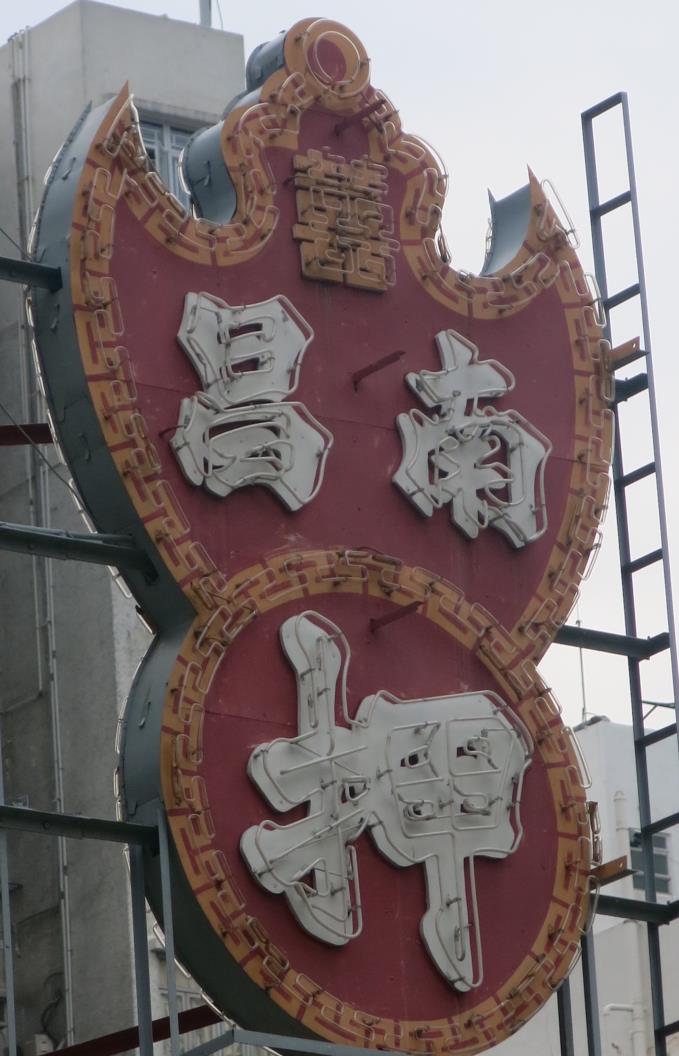 Pawn shop sign; below, Fiona introduces us to street food vendors and a dried gecko, valued in Chinese medicine
Pawn shop sign; below, Fiona introduces us to street food vendors and a dried gecko, valued in Chinese medicine
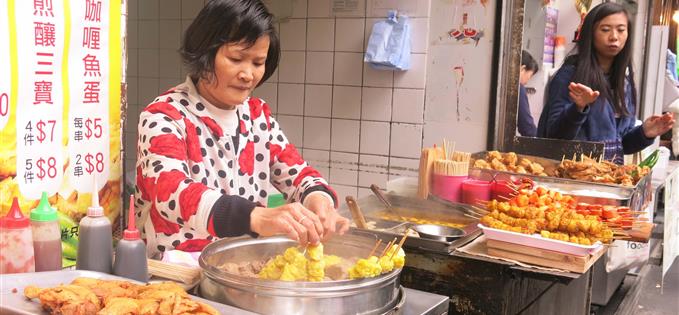
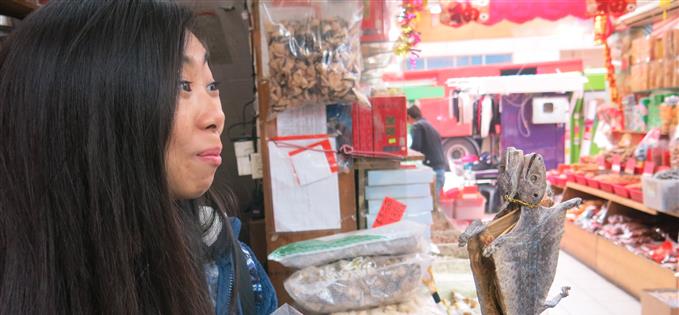
Our small group is led by a mega-bright English Lit postgrad called Fiona, from a fortunetelling family of Hakka descent. The Hakkas migrated south from the Yellow River many dynasties ago bringing with them a radical agrarian outlook, a knack for savoury tofu and a habit of constructing round, fortified villages. We learned all this later at the terrific Hong Kong Museum of History along the road from the ICON. But before the education, the troughing.
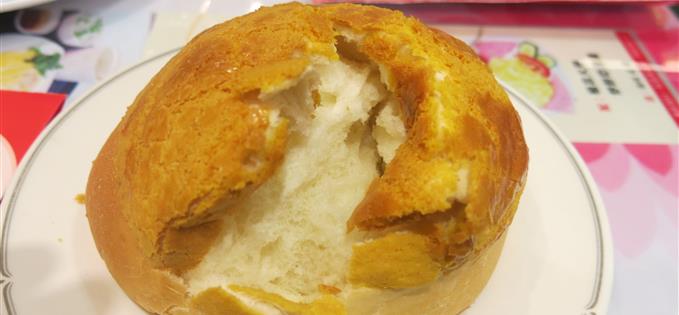 Pineapple bun; below, ducks, goose intestines, chicken feet, 100-year-old eggs, dragon fruit
Pineapple bun; below, ducks, goose intestines, chicken feet, 100-year-old eggs, dragon fruit
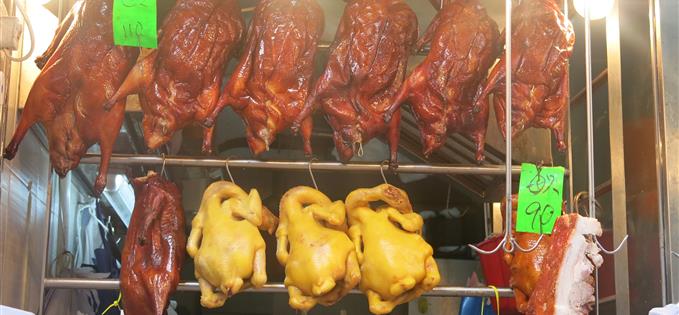
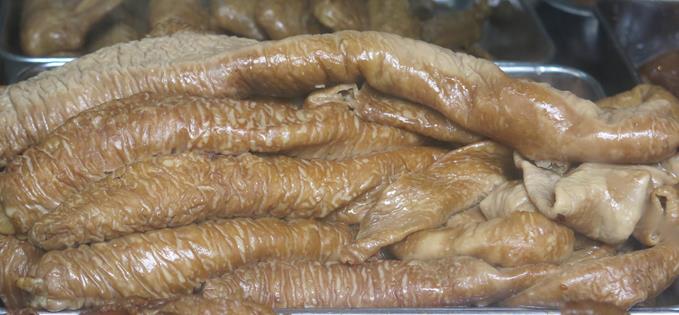
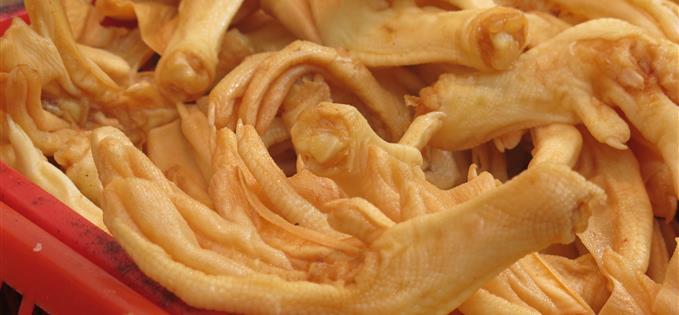
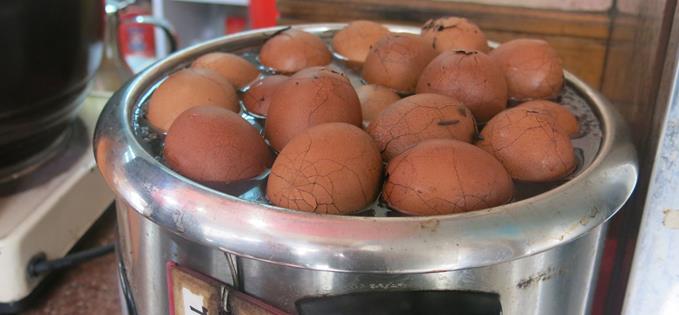
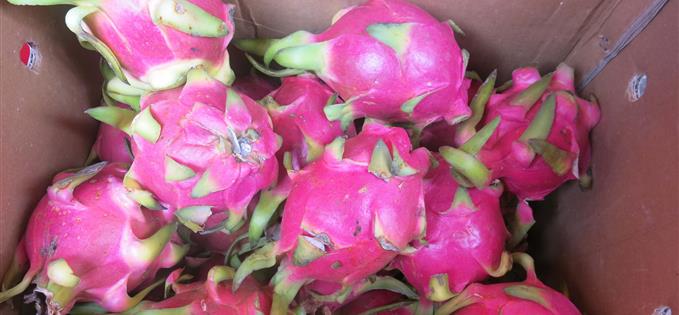
The museum visit was to consolidate much of the social history Fiona imparted as she led us round Sham Shui Po, taking in pineapple buns (tasty) and Nai Cha (milky tea made with the evaporated stuff – an acquired taste, let’s say) at a little place in Yu Chau Street; rice rolls at Hop Yick Tai, a breakfast cafe; soy product sampling at the A1 Tofu Co; pork knuckle and braised goose at a Tai Po Road joint that also offered huge goose intestines (we passed); walnut cookies at the Eight Angels Cake Shop; and finally ‘ha zi lo meen’ (dry egg noodles with shrimp roe) at Lau Sum Kee, an ultra-traditional noodle shop where the proprietor rolls each batch by riding them on a huge bamboo pole for half an hour. It must chafe.
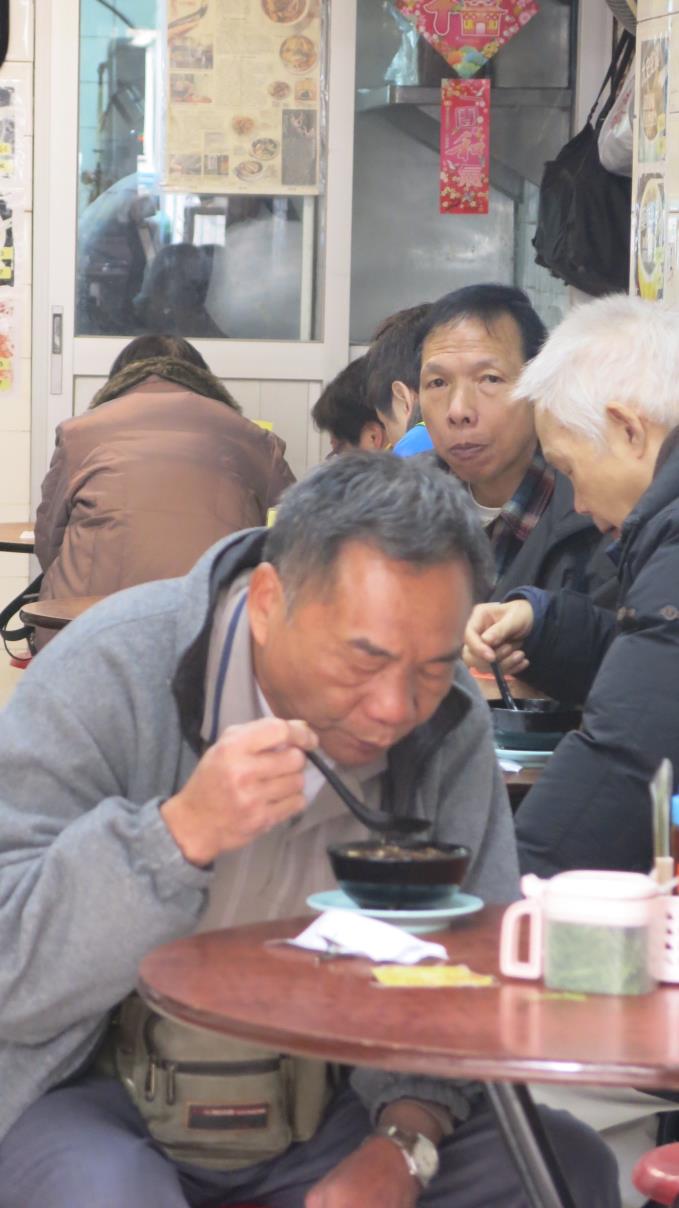 Eating snake soup; below in close-up
Eating snake soup; below in close-up 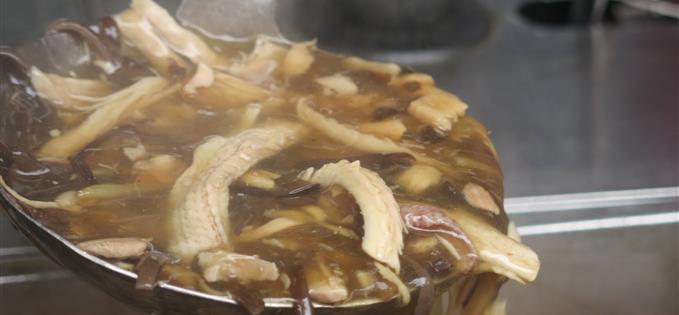
Along the way we encountered street food vendors, uncompromising markets, even a snake soup cafe. On one of their other tours you experience the whole soupmaking process (cobra costs extra) and get to taste, but here we just watched the locals slurping this aphrodisiac delicacy.
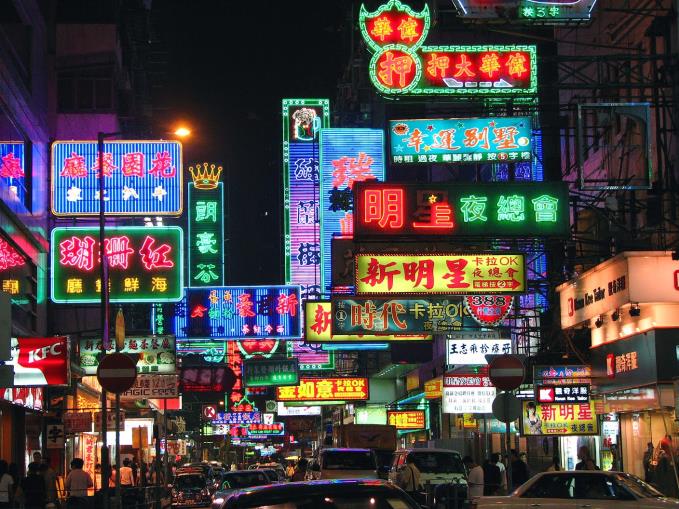
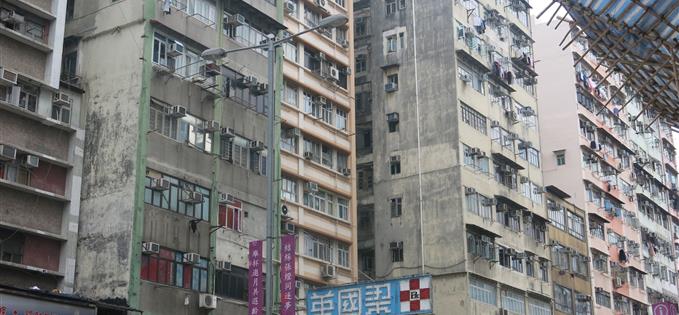
I’d highly recommend these on-foot tours as an introduction to the teeming culture shock that is Hong Kong. On our arrival we’d stumbled around various markets and run the gauntlet (‘No I don’t want to buy a Rolex’) of the voracious hustlers along the Nathan Road main drag. It’s all too obvious that Hong Kong really is the world’s most densely populated city (Mong Kok and environs alone boast 130,000 inhabitants per square km). Fiona put it wryly: “Bumping into people is as easy as eating rice.”
All those stories, seized on by the Daily Mail, about ageing men living in cages packed into shabby flats suddenly gain a creepy credence. A Canadian on our tour had the luxury of Air BnB in the same quarter, the tiniest he’d ever encountered. Even for the well-to-do space is at a premium.
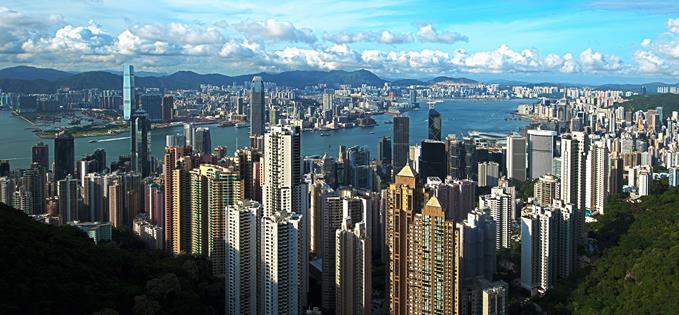
No such concerns in the Hotel ICON, where our Club Room looked out across Victoria Harbour at the Manhattan of the China Seas, a cityscape even more spectacular after dark with the iconic Star Ferries chugging between junks with their crimson sails lit up. These ferries by the way are one of the great bargains of the city.
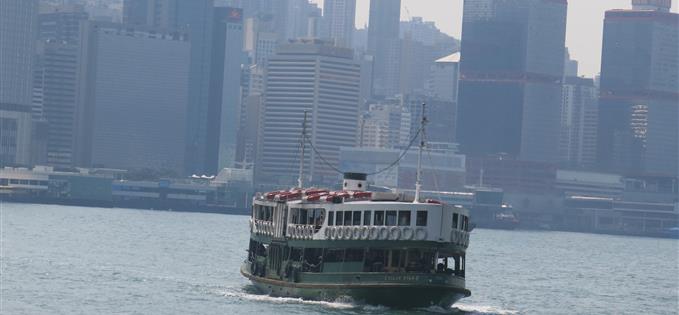 The Star ferries chug between Kowloon and Hong Kong Island
The Star ferries chug between Kowloon and Hong Kong IslandVisit this link for Confidential’s Ten Budget Things to Do in Hong Kong, which includes going up the unmissable Peak on foot or via the vintage tram and the Symphony of Lights, a free son et lumiere event nightly on the Kowloon waterfront. A visit to the Temple Street Night Market is also essential, to haggle with the traders, then sample some spicy crab specialities or roast chestnuts at the outdoor food stalls known as dai pai dongs.
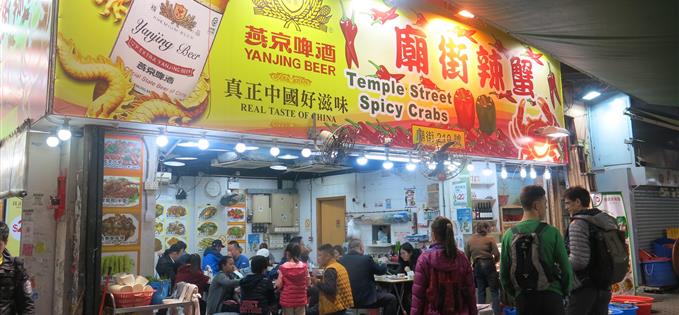 Temple Street Night Market; below fish served couldn't be fresher
Temple Street Night Market; below fish served couldn't be fresher
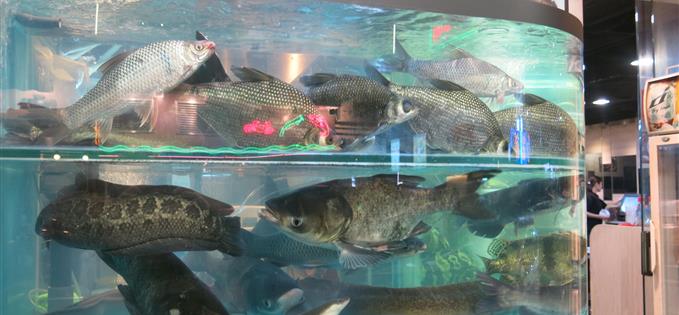
We charted things to do by using the Smartphone each ICON guest gets for the duration of their stay with guides to the city built in and free international calls. It’s one of those special touches, another of which include access to the Above & Beyond Lounge for complimentary afternoon tea or cocktails for Club Room and above residents, while all guests can use the frees shuttle bus every quarter of an hour to the Star Ferry Terminal, and the Peninsula Hotel (Felix, the top floor bar/restaurant of this legendary hotel is a swish bolthole).
We had felt pampered from the moment we touched down at Hong Kong Airport after our 11 hour 40 minute flight, conveniently arriving at breakfast. If you are switching flights there, as we would 55 hours later en route to Auckland, there’s a terrific Cathay Pacific lounge, important soon for the new route from Gatwick launching in September.
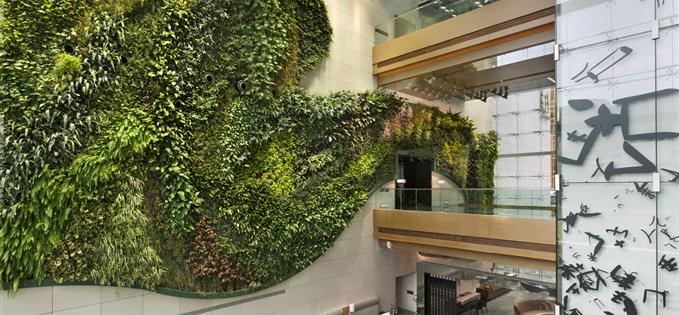 ICON foyer; below the pool, Above and Beyond and the Market restaurant
ICON foyer; below the pool, Above and Beyond and the Market restaurant
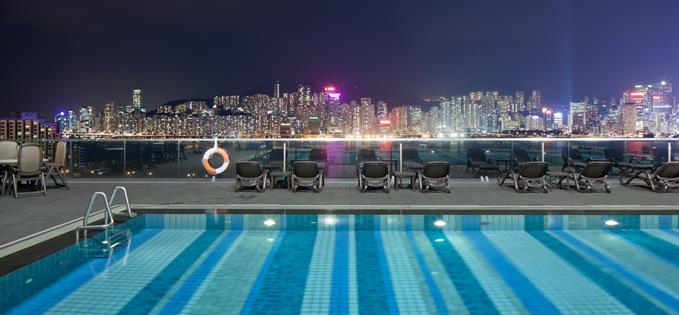
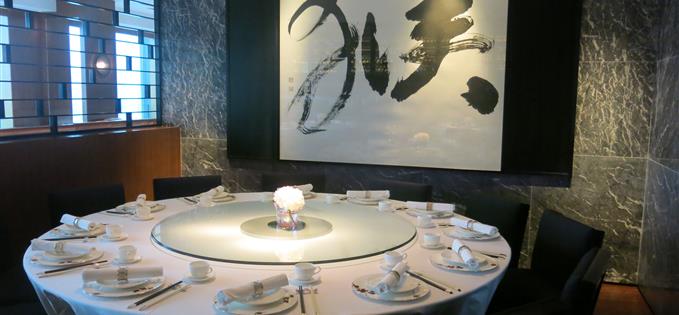
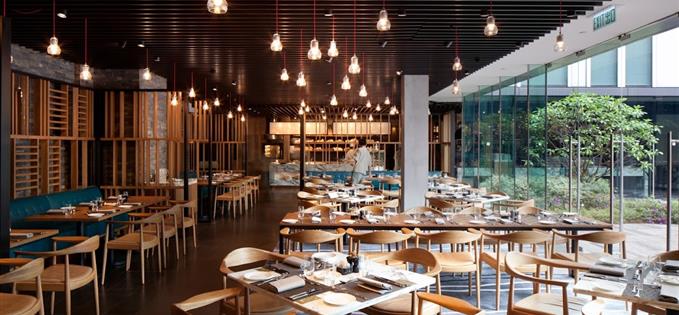
The airport is on reclaimed land 35km from the ICON in Kowloon. We were whisked there in a Tesla electric limousine. It’s all part of this new build (2011) newcomer’s strict green policy, symbolised by the its foyer feature, one of the world’s largest indoor vertical gardens, but extending to all its 263 rooms, its spa and ninth floor outdoor swimming pool. Typical also of the groundbreaking approach is its specific role as the teaching and research hotel for the city’s School of Hotel and Tourism Management, helping train students in the highest standards in situ.
None of this worthiness, of course, is at the expense of glamour. Conran Associates designed my favourite, The Club Lounge, and the eclectic downstairs Market Restaurant, the latter in the style of the Wan Chai Market made famous in the World of Suzie Wong. The Above & Beyond restaurant sharing the top floor with the Lounge is a Chinese restaurant with a terrific wine list.
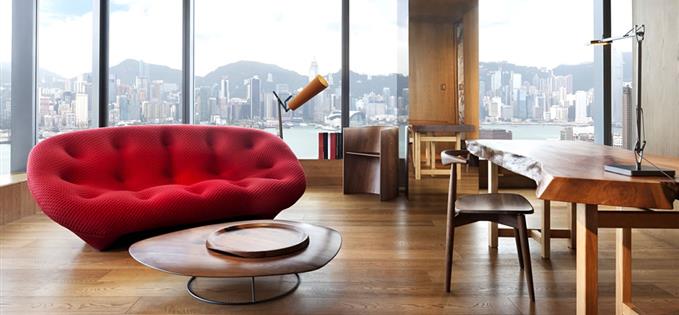
Most glamorous bolthole of all in the ICON is the Designer Suite by Vivienne Tam (above) in homage to contemporary China chic and Shanghai’s Art Deco era. As I said before – inscrutable parallel universes in one amazing city.
Our Top 10 places to eat and drink in Hong Kong
Acclaimed Manchester singer Lucy Hope spent six weeks living like a Hong Kong local just before our arrival. Here are the cool places she recommends to hang out in if snake soup and condensed milk tea are not your thing…
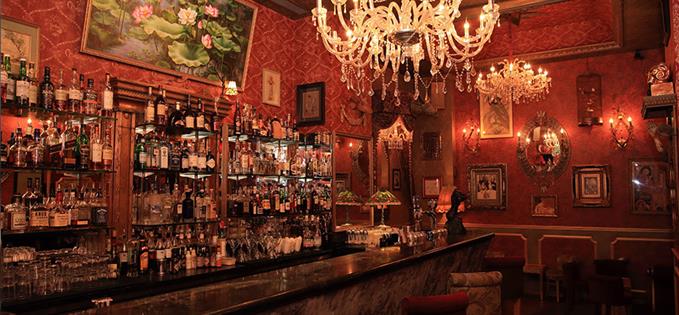
1 Le Boudoir, B/F, 65 Wyndham Street, Central Down a stairway next to Pastis, a hidden French late night drinking bar. Full of sexy poseurs. If you find yourself in here, you know you’re in trouble. Champagne, cocktails, DJs.
2 Feather Boa, 9-11 Staunton Street, Central Distressed regency elegance, famed for its strawberry daiquiris, which are enormous and come with hot chocolate powder around the rim. Not a members’ bar but you do have to be with someone flashing a HK resident card.
3 Yardbird, 33-35 Bridges Street, Sheung Wan Izakaya-style chicken restaurant that doesn’t only serve the obvious parts of the bird. You’ll find oysters heart, liver…all served with soul. Fantastic sake menu.
4 Chom Chom, G/F Block A, 58-60 Peel Street, Central Vietnamese street food and beer. Packed nightly for its fun vibes.
5 Brickhouse G/F, 20A D’Aguilar Street, Central This ‘hidden’ restaurant, is quirky and open until 5am for tortillas, tacos, ceviche and Mexican fiesta feels. I don’t care if it is hipster: Olé!
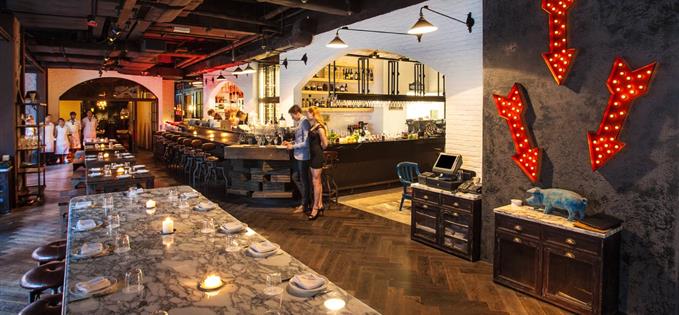
6 Blue Butcher, 108 Hollywood Road, Central The most expensive steak and truffle fries I’ve ever had. And arguably the best. Meat provenance is detailed in full for each cut. Plus top tartare, foie gras and bone marrow. The veal sweetbread nuggets with black truffle emulsion are sensational. Try the cocktail called the Fig & Cheese but suggest that, unlike me, you only imbibe the one.
7 Spring Deer, 2/F, 42 Mody Road, Tsim Sha Tsui Duck and pancakes like you’ve never experienced. No fuss décor: strip lighting and far too many mirrors. Floury homemade pancakes, all the trimmings, and the duck is served in thick, succulent slices, not dry shreds.
8 ABC Kitchen, 38 Des Voeux Road West, Sheung Wan Plastic chairs, wipe clean table clothes, BOYB. Pretension-free but impressive food served in a Sheung Wan wet market. Better for a boozy dinner amongst friends than a first date.
9 22 Ships, 22 Ship Street, Wan Chai Jason Atherton is the chef behind this superb tapas restaurant with an outstanding sherry list. The canteen-style of some tables means that even if you’re on a date you may find yourself sitting in and amongst other diners but this only adds to the fun vibe. My HK fave.
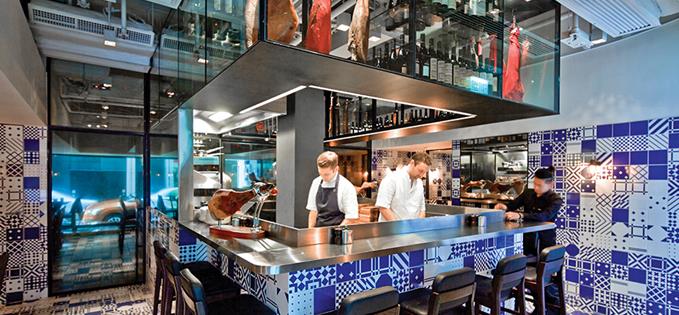
10 Back Bar, (Ham & Sherry), G/F, 1-7 Ship Street, Wan Chai After you’ve sunk a few in 22 Ships, it’s time to get three sheets to the wind. Head starboard to Back Bar (another ‘hidden’ bar – psst…it’s behind Ham & Sherry). Cocktails punning on great film titles created by award-winning Ryan Nightingale, who Sassy Hong Kong voted a sone of the city’s ‘hottest bartenders’.
Factfile
Neil Sowerby stayed at the Hotel ICON, 17 Science Museum Road, Tsim Sha Tsui East, Kowloon, Hong Kong. +852 3400 1000. Rates from HKD$2,200, room only for an ICON 36 room
Return fares from Manchester to Hong Kong cost from £469 in economy and £949 in premium economy. Cathay Pacific flies from London Heathrow to Hong Kong five times daily and from Manchester to Hong Kong four times per week, and onwards to over 190 destinations globally. As of September, it will also fly from Gatwick to Hong Kong four times per week. For further information, visit www.cathaypacific.co.uk or call 0208 834 8888.
For Hong Kong tourist information visit this link.
Neil Sowerby parked at Manchester Airport. For full details of parking there visit this link.
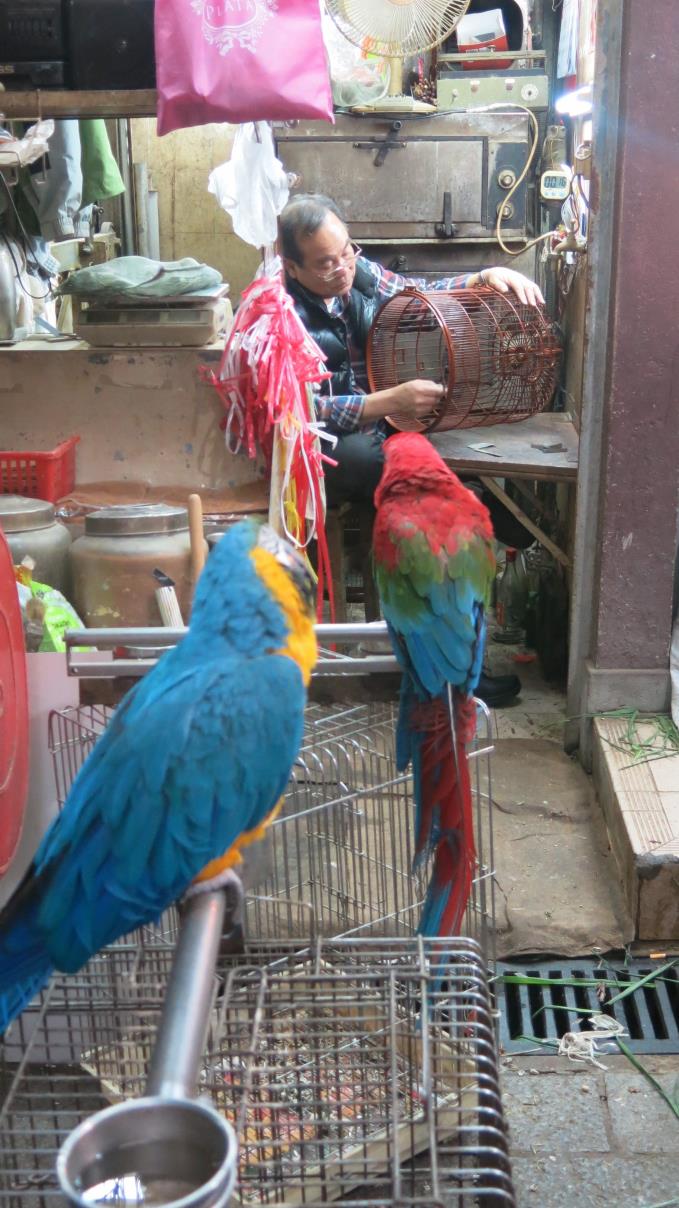 Kowloon bird market; nearby is the flower market – and all human life!
Kowloon bird market; nearby is the flower market – and all human life!











